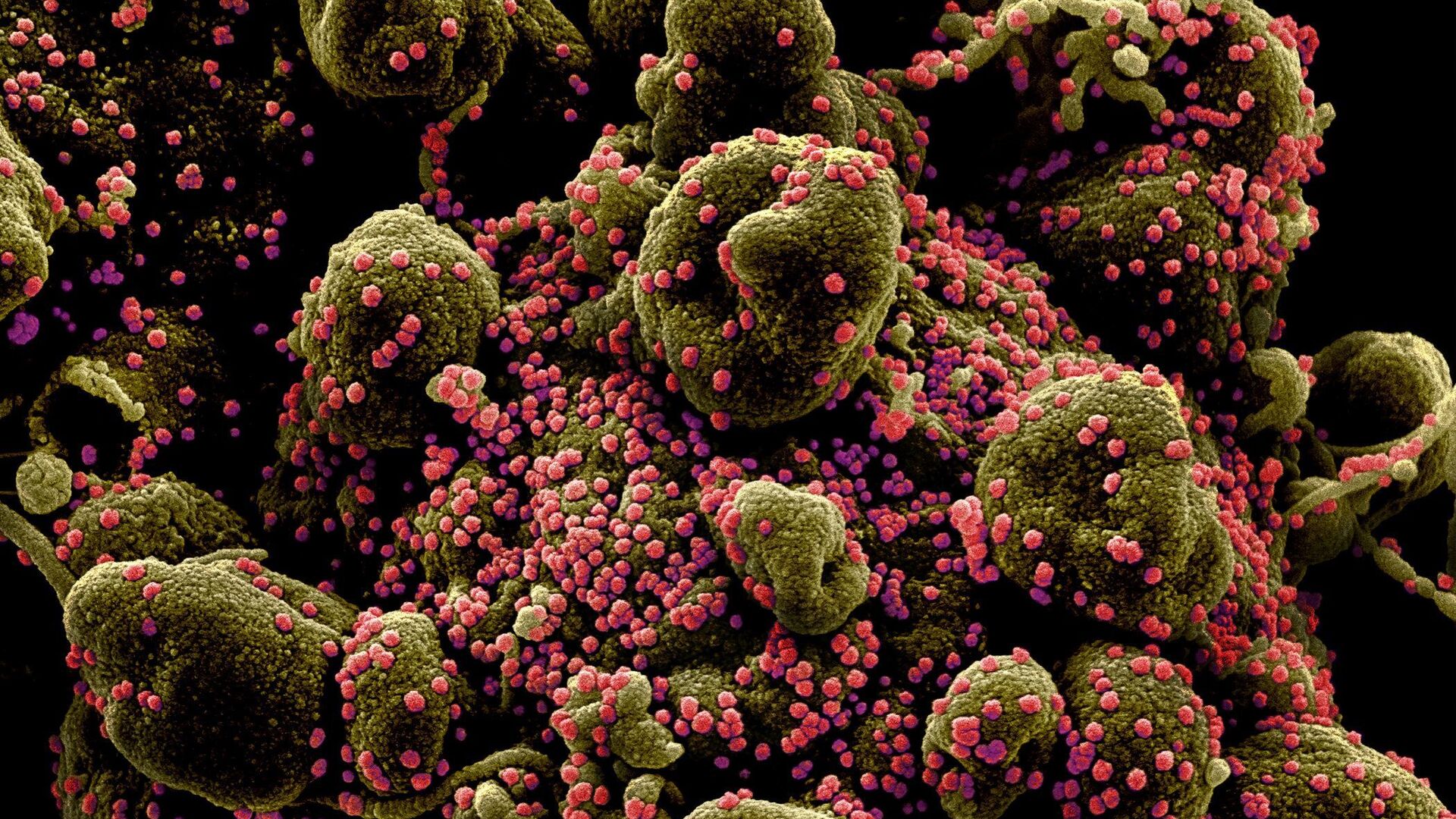https://sputnikglobe.com/20230103/scientists-discover-first-ever-organism-that-only-eats-viruses-1106002155.html
Scientists Discover First Ever Organism That Only Eats Viruses
Scientists Discover First Ever Organism That Only Eats Viruses
Sputnik International
In a new study, scientists have supposedly been able to obtain evidence of the existence of a micro-organism that can exist by eating only viruses.
2023-01-03T07:08+0000
2023-01-03T07:08+0000
2023-01-03T07:08+0000
science & tech
bacteria
virus
food chain
discovery
https://cdn1.img.sputnikglobe.com/img/07e4/0c/13/1081509111_0:0:2100:1182_1920x0_80_0_0_406cae006207bdeabcf10ee2efd30120.jpg
Something eats something, it's a law of nature. A University of Nebraska-Lincoln research team led by John DeLong, has discovered a bacterium that can possibly live by absorbing only viruses, thus making it a "virovor".As DeLong himself explained, viruses must be very "tasty" because of their structure, so there must be someone who has learned how to eat them.To test the hypothesis, DeLong and the team collected water samples from the street, isolated different microbes and planted them with chloroviruses - the inhabitants of raw water that infect green algae.After that it was seen, that with no other food source than viruses, the infusoria Halteria population grew 15-fold in two days and the chlorovirus level in the water dropped by 100-fold. In control samples, where there was no virus, the Halteria population did not grow at all.In the next experiment, the chlorovirus was dyed with fluorescent dye and after a while, the infusoria also began to glow. This confirmed that it was feeding on viruses.Mathematical calculations of the ratio of Halteria growth to the chlorovirus decline also showed no significant distortions, further confirming the theory.In the future, the team plans to trace this phenomenon in the wild, and investigate its impact on food chains and the evolutionary process.
Sputnik International
feedback@sputniknews.com
+74956456601
MIA „Rossiya Segodnya“
2023
News
en_EN
Sputnik International
feedback@sputniknews.com
+74956456601
MIA „Rossiya Segodnya“
Sputnik International
feedback@sputniknews.com
+74956456601
MIA „Rossiya Segodnya“
bacteria feeds on viruses, who eats viruses, halteria eats viruses, chlorovirus experiment, halteria chlorovirus experiment, consuming viruses bacteria
bacteria feeds on viruses, who eats viruses, halteria eats viruses, chlorovirus experiment, halteria chlorovirus experiment, consuming viruses bacteria
Scientists Discover First Ever Organism That Only Eats Viruses
By now there has been evidence that some micro-organisms can "snack" on viruses. However, those capable of surviving on a 'viral diet' alone were thought to be non-existent. A new study suggests that this is not the case.
Something eats something, it's a law of nature. A University of Nebraska-Lincoln research team led by John DeLong,
has discovered a bacterium that can possibly live by absorbing only viruses, thus making it a "virovor".
As DeLong himself explained, viruses must be very "tasty" because of their structure, so there must be someone who has learned how to eat them.
"They're made up of really good stuff: nucleic acids, a lot of nitrogen and phosphorous," said DeLong in an interview to the scientific journal. "Everything should want to eat them… So many things will eat anything they can get a hold of. Surely something would have learned how to eat these really good raw materials."
To test the hypothesis, DeLong and the team collected water samples from the street, isolated different microbes and planted them with chloroviruses - the inhabitants of raw water that infect green algae.
After that it was seen, that with no other food source than viruses, the infusoria Halteria population grew 15-fold in two days and the chlorovirus level in the water dropped by 100-fold. In control samples, where there was no virus, the Halteria population did not grow at all.
In the next experiment, the chlorovirus was dyed with fluorescent dye and after a while, the infusoria also began to glow. This confirmed that it was feeding on viruses.
Mathematical calculations of the ratio of Halteria growth to the chlorovirus decline also showed no significant distortions, further confirming the theory.
"I was calling up my co-authors: 'They grew! We did it!'" continued DeLong. "I'm thrilled to be able to see something so fundamental for the first time."
In the future, the team plans to trace this phenomenon in the wild, and investigate its impact on food chains and the evolutionary process.

